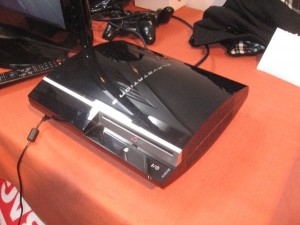What has happened about the faulty firmware issue for the PS3
Article
Sony releases PS3 firmware update to fix last week’s fiasco | Tech Culture – CNET News
Instructions – From the horse’s mouth
Sony PlayStation
Manually updating your PS3 with the firmware
My Comments
Previously, when Sony rolled out version 4.45 of the PlayStation 3 operating software, this update had caused many PS3s not to boot properly for interactive use. The situation had been described where the consoles were effectively “bricked” and Sony had to immediately pull the update from their PS3 software-update servers.
Now they have released version 4.46 of this firmware and made it available also as a manual-update file so you can recover a PS3 that had suffered this fate. When this situation had occurred with the PS3, the version-4.45 software went in to an “endless-loop” during startup thus not reaching the standard “XMB” start menu.
Fortunately, Sony had set up a “safe mode” for the PS3 in a similar way to what Microsoft, Apple and others have offered as a diagnostic startup option for their regular-computer operating systems. Here, this places the equipment in a known state with minimum software and hardware overhead that allows one to perform diagnostic or recovery work on faulty equipment.
In this case, you can load the firmware from a USB memory key and Sony have provided instructions on how to go about this, such as which folder to position the firmware file on the USB memory key. Here, you would need to use your desktop or laptop computer to download the firmware file to the USB memory key in the known location (\PS3\UPDATE).
Here they also detailed how to place the PS3 in to the aforementioned “safe mode” so you can load the firmware from the USB memory key. As well, you would have to connect the game controller to the PS3 via a USB cable while it is in this mode and be sure to select the “System Update” option on the menu that pops up to start this update without destroying your data and settings.
As well, I would suggest that you check that the version of the firmware on your PS3 is indeed 4.46 or newer in order to make sure that your console is behaving in a reliable manner.
An issue that could be raised regarding field-updatable firmware especially for consumer-electronics devices is providing a fail-safe update process with a rollback mechanism. This is more of an issue when there are situations like bugs that missed the quality-control process; failed download / install processes or, at worst, malware written in to field-updated firmware.
Here, the previous firmware could be kept in a separate section of flash memory or secondary storage, as well as the ability for the device to start in to safe mode thus providing the option for software rollback if the software didn’t start to the normal user interface. Similarly, the standard user interface could be used as a way to facilitate this kind of software rollback, which can come in handy with bugs that creep up during normal operation. This is similar to what has been achieved with most desktop operating systems like Microsoft Windows, where the operating system creates “system restore points” at the start of software install or update processes and is able to roll back to these points if the install or update becomes dysfunctional.
What we are starting to see is that devices like games consoles, smart TVs and printers are becoming as sophisticated as regular computers and entering a point where the same kind of irregularities could creep up on them.

